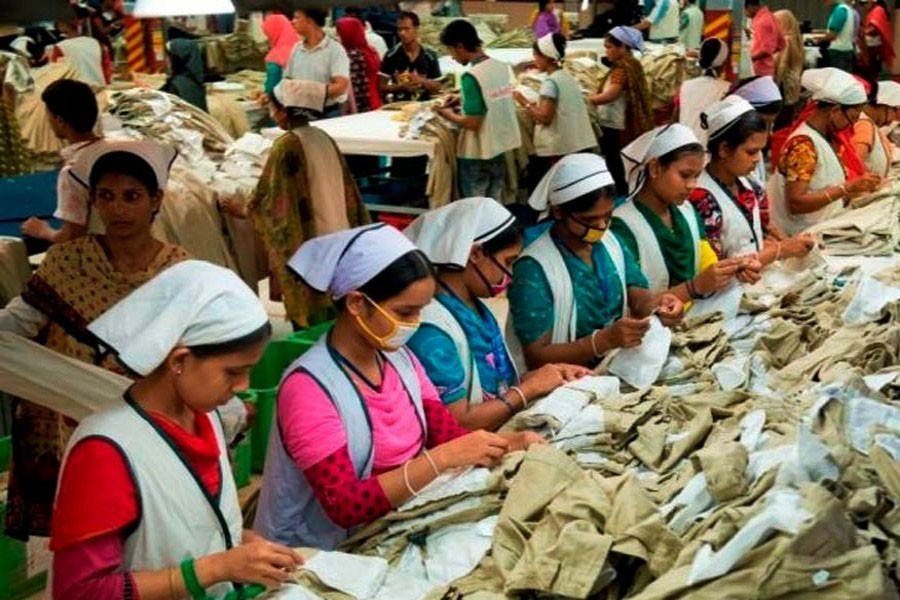Lower middle-income countries witnessed the highest decline in working hours in 2020 as Covid-19 caused unprecedented disruptions to the world of work, according to an ILO report.
An estimated 11.3 per cent of working hours were lost in these countries, including Bangladesh, compared to the pre-crisis baseline (fourth quarter of 2019).
The latest analysis of the labour market impact of Covid-19 by the International Labour Organisation (ILO) recorded massive damage to working time and income.
Prospects for a recovery in 2021 are slow, uneven and uncertain unless early improvements are supported by human-centred recovery policies, it predicted.
The new annual estimates in the seventh edition of the 'ILO Monitor: Covid-19 and the World of Work' confirmed the massive impact that labour markets suffered in 2020.
The quarterly estimates reflected volatility in working hours during the pandemic.
Half the loss of working hours occurred in the second quarter of 2020. For the countries under review, the rate was the highest 29.0 per cent, cited the report.
"In 2020, lower middle-income countries experienced the greatest losses in working hours, which stood at 11.3 per cent, well above the global average of 8.8 per cent."
This was overwhelmingly driven by the stronger impact of the crisis on these countries in the second quarter (29.0-per cent work hour losses compared to 18.2-per cent global average).
Upper middle-income and high-income countries present similar losses (7.3 per cent and 8.3 per cent respectively) during the period, albeit with considerable differences in quarterly trends.
Low-income countries experienced the lowest losses of all income groups at 6.7 per cent, reported the ILO.
These losses are accounted for either by reduced work hours for those in employment or "unprecedented" levels of employment loss, hitting 114 million people.
Significantly, 71 per cent of job losses (81-million people) came in the form of inactivity, rather than unemployment, meaning they were unable to work for Covid restrictions or simply ceased to look for work.
Such massive losses resulted in an 8.3-per cent decline in global labour income (before support measures are included), equivalent to $3.7 trillion or 4.4 per cent of global GDP.
Women have been more affected than men by the pandemic's labour market disruptions. Globally, employment losses for women stand at 5.0 per cent versus 3.9 per cent for men. In particular, women were much more likely than men to drop out of the labour market and become inactive.
The report shows the uneven impact on different economic, geographic and labour market sectors.
It highlights concerns of a "K-shaped recovery", whereby those sectors and workers hit hardest could be left behind in the recovery, leading to increasing inequality, unless corrective measures are taken.
The worst-hit sector has been accommodation and food service where employment declined by more than 20 per cent, on average, followed by retail and manufacturing.
In contrast, employment in information and communication, and finance and insurance, surged in second and third quarters of 2020.
Marginal increases were also seen in mining, quarrying and utilities, according to the ILO report.
There is still a high degree of uncertainty, but the latest projections show that most countries will experience a relatively strong recovery in the second half of 2021 as vaccination takes effect.
The ILO Monitor puts forward three scenarios for recovery-baseline, pessimistic and optimistic.
The baseline scenario (drawn on IMF forecasts from October 2020), projected a 3.0-per cent loss of work hours globally in 2021 (compared to Q4 2019), equivalent to 90-million full-time jobs.
The pessimistic scenario, which assumes slow progress on vaccination in particular, would see work hours drop by 4.6 per cent while the optimistic one forecasts a 1.3-per cent decline. This would depend on the pandemic being under control and an upsurge of consumer and business confidence.
In all scenarios, the Americas, Europe and Central Asia would experience around twice the working hour losses of other regions.
The ILO Monitor made recommendations like international support for low- and middle-income countries that have fewer financial resources to roll out vaccines, and promote economic and employment recovery.


